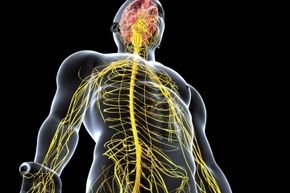Anyone who has experienced insomnia for more than a span of a night or two has wondered, "Can I die from this?" When you're sleep deprived, it certainly feels like it's possible, and yes, you can die from sleep deprivation. Sleep deprivation can cause a lot of unpleasant side effects, from fatigue to irritability to short-term memory loss, but most of us recover from our sleep loss. The exception? Those with a disease known as fatal familial insomnia (FFI).
While no one knows for sure exactly who the first person with FFI was, scientists trace it to one of two Italian men who lived in the late 18th and early 19th century. A Venetian man died from what appear to be symptoms of the disease in 1765, and a different Venetian man succumbed to what was very likely FFI in 1836. Regardless of which man may be the true source, each passed the disease on to their children, and it not only ravaged those families, it carries on to this day -- although it's very rare. Only about 100 people have died from it, at least that as documented cases. FFI wasn't officially considered a disease until 1986 [sources: Schadler, Max].
Advertisement
Fatal familial insomnia isn't as simple as dying because you're unable to get a good night sleep night after night. FFI is an autosomal dominant neurodegenerative disease -- that means it's a hereditary genetic disorder caused by a defective gene on one pair of autosomes. (You have 22 pairs of autosomes, which are your non-sex chromosomes; you only have two sex chromosomes, X and Y, which determine if you're male or female.)
FFI is what's known as a prion disease, a rare disease in which a normal protein found in the body, the cellular protein (PrPC), is defective. Prion diseases can occur in three different ways. They can be acquired, such as the case with Kuru, which is an infection caused by acts of cannibalism (specifically, eating human brains); they can be sporadic, which means the disease spontaneously occurs without any particular cause; they can be inherited, which means the disease is passed along in families.
Although it's possible for fatal insomnia to appear spontaneously in an individual within a family where no one else suffers from the disease (which would make it a sporadic type, sFI, a rarity in an already rare disease), it almost always occurs within families. Families with FFI in their lineage -- and it's estimated there are probably 28 to 30, but no more than 40 family lines with the problem -- all carry a genetic mutation specifically on the prion protein gene (PRNP) in addition to another mutation of the gene called methionine polymorphism (which is also a characteristic of other neurodegenerative diseases). People who inherit and carry the FFI mutation have a 50 percent chance of passing the defective gene on to their child.
Advertisement



